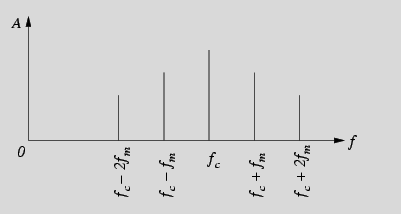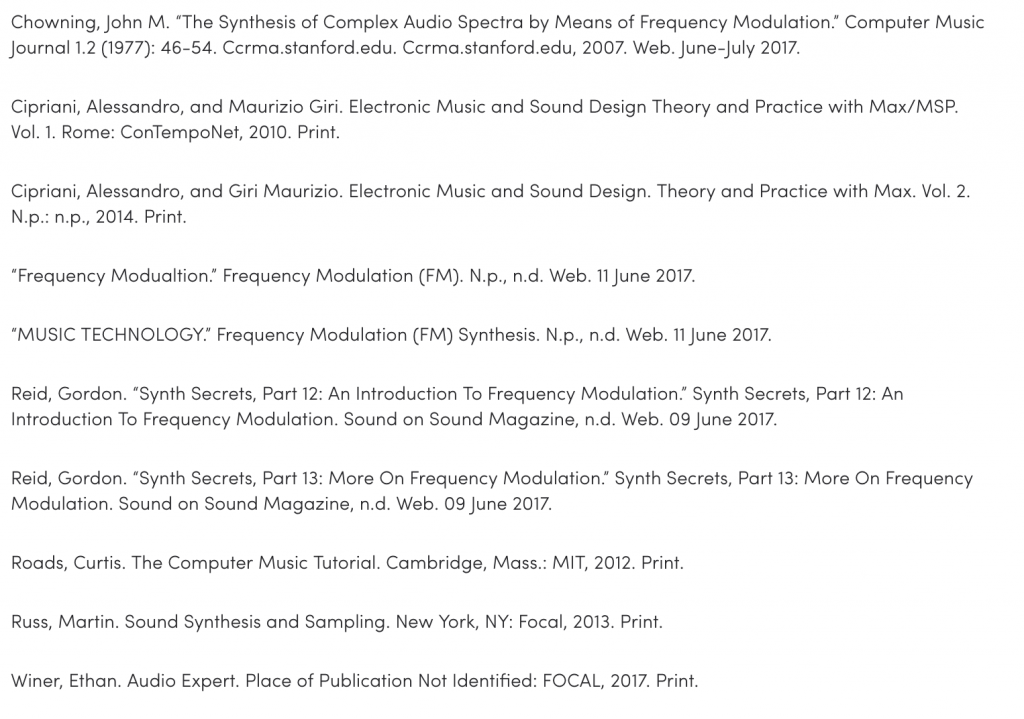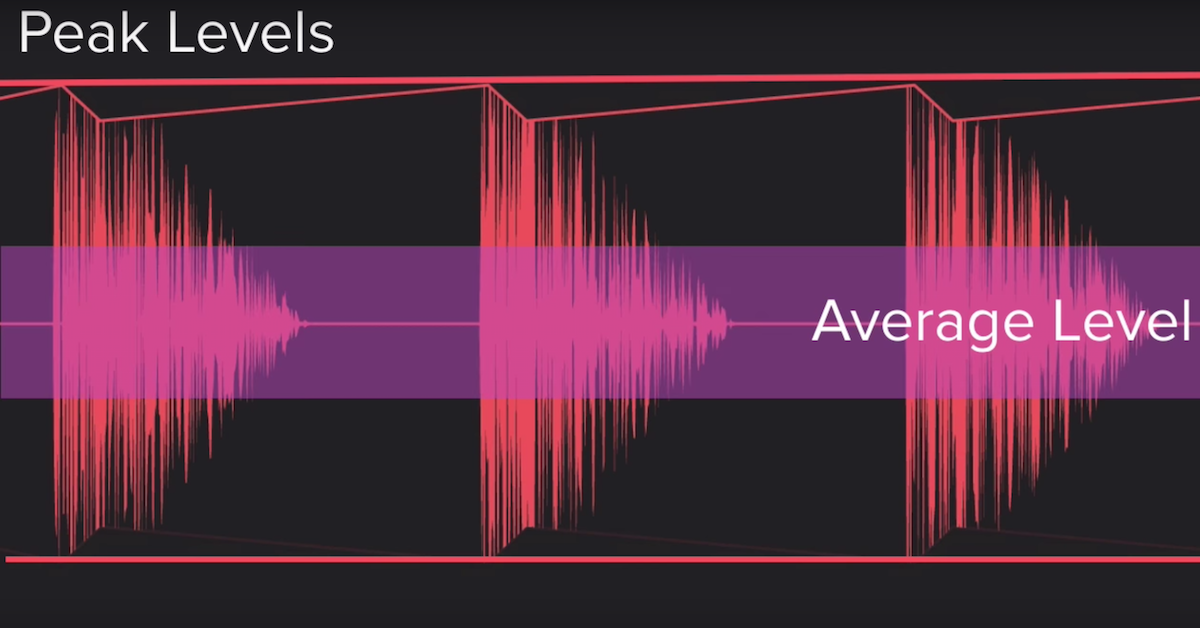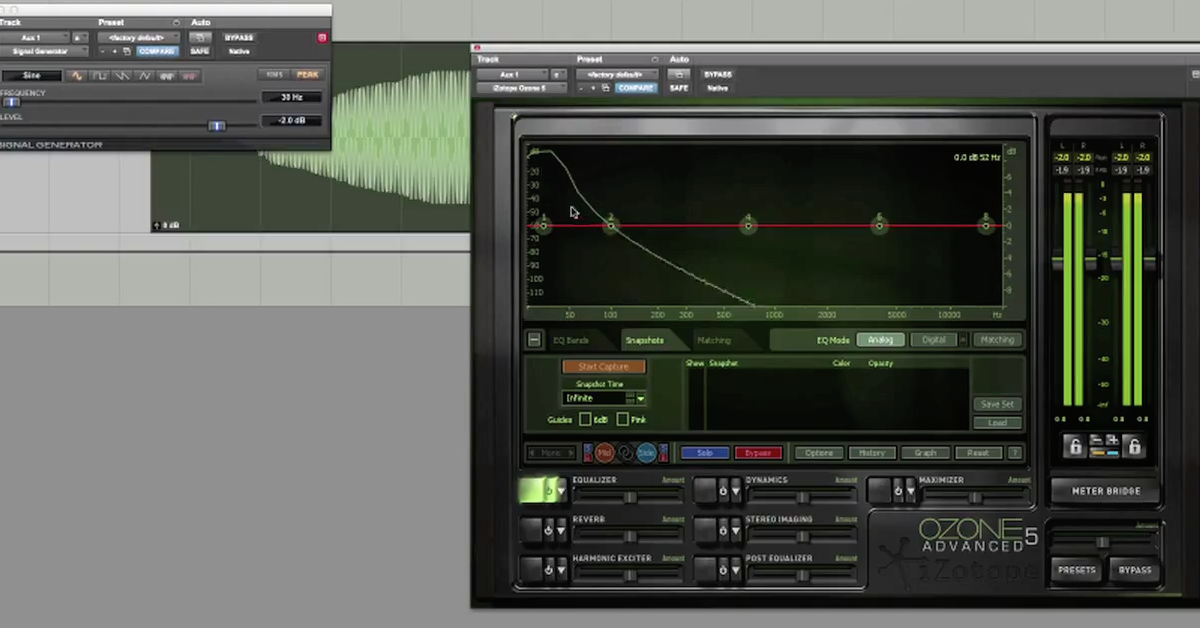Introduction to FM Synthesis
Article Content
FM Synthesis Basics
The concept behind FM Synthesis was first expounded by John Chowning in his landmark paper The Synthesis of Complex Audio Spectra by Means of Frequency Modulation. Yamaha bought the patent from Chowning and began producing digital synthesizer prototypes in the late seventies. In the early 80’s they released the DX series and the DX7 became their best seller. This landmark product “ushered in the transition from analog to digital technology.” (Russ 28) Ironically, 30 years later we find ourselves in the midst of an Analog renaissance with musicians diving into the analog market with the same exuberance exhibited at the birth of digital audio.
FM or Frequency Modulation Synthesis is based on the use of at least two oscillators; a Carrier and a Modulator. The Carrier Frequency is most related to the pitch or the fundamental frequency and is usually controllable with a keyboard or other MIDI input. The Modulating Frequency is used to alter the Carrier at a specific Modulation Rate and Modulation Intensity or Index.
“The Modulation Index is directly related to the change in the Peak Carrier frequency divided by the amplitude of the Modulator. For any given Modulator frequency, it is the Modulation Index (and, therefore, the amplitude of the Modulator) that determines the amplitude of each of the components in the spectrum of the output signal.” (Music)
The Peak Deviation is the number of cycles above or below the Carrier frequency and is directly proportional to the amplitude of the Modulating Oscillator. So even in the case of simple FM, the addition of envelopes to alter the amplitude of the Modulator and the Carrier can drastically effect the resulting timbre.
At the heart of the method is the concept of sideband frequencies. These are sum and difference tones that are generated during frequency modulation. So below is an example of simple sinusoidal FM where fc is the carrier frequency, and fm is the modulating frequency.

An Operator (a term coined by Yamaha) is a combination of an oscillator, envelope and amplifier (DCA or VCA). (Russ 268) More complex FM systems can have several operators that are interconnected in various ways. The DX series had six operators which could be connected in up to 32 configurations that could include, multiple carriers, multiple modulators, multiple modulator and carrier pairs, feedback systems, stacked and additive systems and combinations.
Below are 8 examples and more can be found at the link below. Each number represents an Operator connected in various ways.

Adding the use of wave shapes other than sine waves and combining and routing operators functioning as multiple carriers and modulators enables the creation incredibly complex sonorities at relatively low computational cost in terms of current CPUs.
The relationship between the frequency of the Carrier and the Modulator need not be harmonically related, which introduces another source of timbral variety and the ability to create rich dissonant textures.
Below are some examples and descriptions of the how they were generated.
Variations in Modulation Frequency
Example 1: 5 Sec Ramp: 0 to 6Hz Mod Freq (220Hz Carrier / 20Hz Peak Deviation)
Example 2: 10 Sec Ramp: 0 to 60Hz Mod Freq (220Hz Carrier / 100Hz Peak Deviation)
Example 3: 10 Sec Ramp: 0 to 600Hz Mod Freq (220Hz Carrier / 100Hz Peak Deviation)
Example 4: 10 Sec Ramp: 0 to 6000Hz Mod Freq (220Hz Carrier / 100Hz Peak Deviation)
Variations in Peak Deviation (Intensity)
Example 5: 10 Sec Ramp: 0 to 100Hz Peak Deviation (220Hz Carrier / 10Hz Mod Freq)
Example 6: 10 Sec Ramp: 0 to 1000Hz Peak Deviation (220Hz Carrier / 10Hz Mod Freq)
Example 7: 10 Sec Ramp: 0 to 10000Hz Peak Deviation (220Hz Carrier / 10Hz Mod Freq)
Example 8: 10 Sec Ramp: 0 to 100Hz Peak Deviation (220Hz Carrier / 440Hz Mod Freq)
Example 9: 10 Sec Ramp: 0 to 1000Hz Peak Deviation (220Hz Carrier / 440Hz Mod Freq)
Example 10: 10 Sec Ramp: 0 to 10000Hz Peak Deviation (220Hz Carrier / 440Hz Mod Freq)
Variations in Modulation Frequency and Peak Deviation
Example 11: 10 Sec Ramp: 0 to 100Hz Peak Dev. and 0 to 60Hz Mod Freq (220Hz Carrier)
Example 12: 10 Sec Ramp: 0 to 1000Hz Peak Dev. and 0 to 600Hz Mod Freq (220Hz Carrier)
Example 13: 10 Sec Ramp: 0 to 10000Hz Peak Dev. and 0 to 6000Hz Mod Freq (220Hz Carrier)
Variations Mod Freq, Peak Deviation and Carrier
Example 14: 10 Sec Ramp: 0 to 100Hz Peak Dev. | 0 to 60Hz Mod Freq | 100 to 300 Hz Carrier
Example 15: 10 Sec Ramp: 0 to 1000Hz Peak Dev. and 0 to 600Hz Mod Freq | 100 to 900 Hz Carrier
Example 16 – 10 Sec Ramp: 0 to 10000Hz Peak Dev. and 0 to 6000Hz Mod Freq | 100 to 2000 Hz Carrier
Given that the examples above do not use any envelopes (other than the simple ramping functions) and there are just two simple sine waves employed you can imagine the possibilities when more complexity is introduced such as, different wave forms, envelop and parameter modulation.
There are many stock plugins that use FM synthesis solely or in combination with other methods found in Logic Pro, Ableton Live Suite, Pro Tools and many other DAWs and effects platforms. They can be used for everything from plunky bass lines to instrumental timbres, bell-like textures and evolving drones. Below are some popular instruments worth exploring.
- Logic Pro — ES 2, EFM 1 and Retro Synth
- Ableton Live Suite — Operator
- Pro Tools — Xpand!2
- Reason — Thor Polyphonic Synthesizer, PX7 FM (extra cost)
- Native Instruments — FM8, Massive
- u-he — Bazille
In the iOS world there are tons of options as well.
Side note: If you haven’t explored the plethora of awesome and powerful music apps that have exploded onto the market, now is the time! The audio quality is remarkable and the apps are dirt cheap if not free! And you’re essentially getting the application and a controller interface all-in-one. With interfaces like the iConnectAUDIO+4 you can get audio and MIDI in and out to your DAW seamlessly. More on this in a future article.
In the meantime, here are just a few FM-based app offerings from the iOS market to explore:
Check out my other articles, reviews and interviews
Follow me on Twitter / Instagram / YouTube
References






